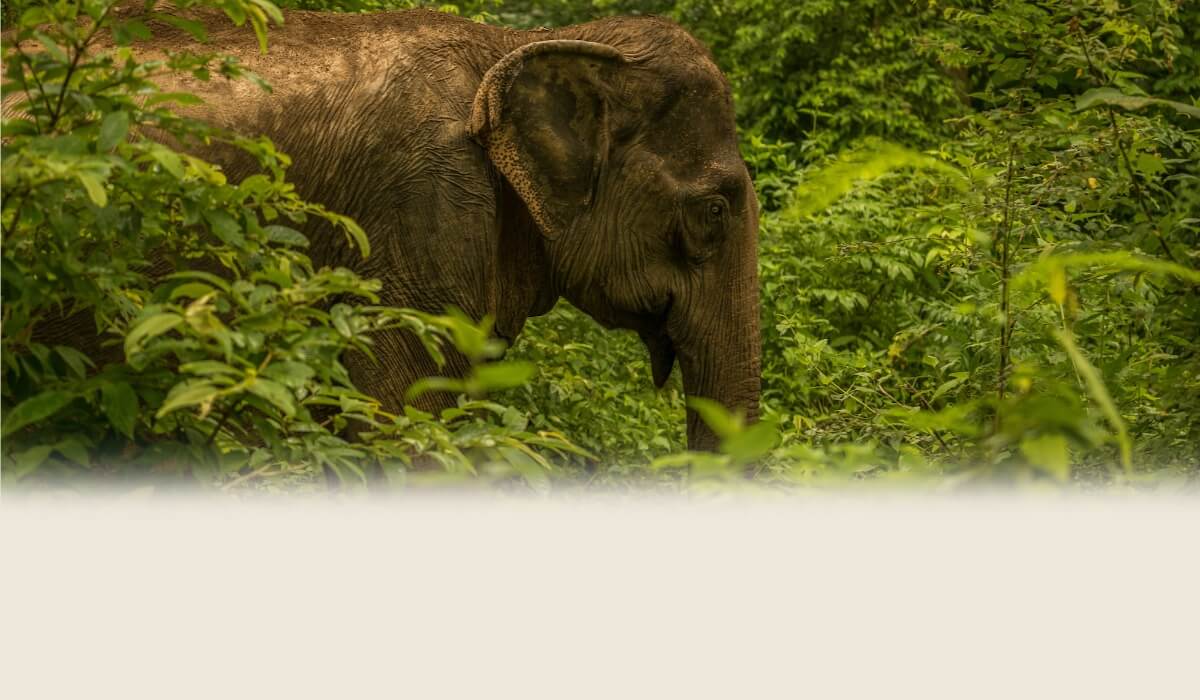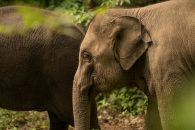Known as Lan Xang, or the “Land of a Million Elephants”, the Lao PDR historically had large and widely distributed populations of both wild and domesticated elephants.
As a living icon with symbolic connotations, the elephant is an animal dear to the hearts of all people of Laos, and Asia in general. They also hold a special place in the minds of tourists who can only imagine them from far away lands.
The wild population of elephants in Laos is around 600 and declining rapidly. Survival of the species in the wild is seriously endangered by loss of natural habitat (human expansion, farming, the logging industry and industrial infrastructure i.e. dams and roads). Shrinking habitable space is leading to direct competition between humans and elephants, which often ends up in tragedy.

Photo by Aapo Haapanen
Most of Laos’s 420 domesticated elephants are working for logging companies collecting freshly cut timber from the forests and are therefore destroying their own habitat.
Traditionally, elephants from wild populations were captured and domesticated. However, as a result of a ban on their capture from the wild; the domesticated population has plummeted. With an increase in demand for timber from rapidly developing countries, the demand for elephants by the logging industry is also increasing. However, as a result of the ban, the current stock of employed animals are made to work harder and faster. They are overworked and exhausted, and as a result cannot reproduce.
There is therefore an urgent need to safeguard the remaining elephants. If Laos and other Southeast Asian countries want to maintain a genetically diverse population and avoid the extinction of its elephants, the number of births must increase dramatically.
This will ensure survival of the domestic population and reduce pressure on its wild counterparts. It is also important that careful and sensitive support be provided to the re-conversion of elephants from logging to alternative financially viable activities, such as responsible and authentic eco-tourism similar to what we do at Elephant Village Sanctuary & Resort and Shangri-Lao Explorer Camp.
Luckily one of our elephants, Mae Khong Nguen, gave birth to a healthy calf over a year ago and we are pleased to say that he is as healthy as ever and growing into a strong adult bill.
More importantly, as a result of being born at Elephant Village, we can make sure that never has to go through the same experience that his mother had in the industry. He will be looked after until he is fully matured in around 15 and then perhaps become part of our tours as well?
Elephant handling is an ancient tradition in Laos, and vital for increasing the development of tourism in tune with its surroundings. This can benefit local people involved in the running and management of these tourist sites, and can provide an alternate source of income for mahouts in order to direct them away from the destructive but lucrative logging industry.
In an ideal world, all elephants would be able to roam free in the wild without the threat of extinction. However due to the rapidly expanding forces of globalization, this can only ever be a dream.
Many tourists neglect to understand the sheer amount of destruction an elephant can cause to farmland and property, where they can destroy an entire villages’ livelihood in a short amount of time.
Elephant Village Sanctuary & Resort is dedicated to contributing to the solution. We make sure all of our elephants are provided with food and medical treatment, along with an enormously improved standard of living. In return our elephants work for only half a day providing tourists with once in a lifetime experiences. This has the benefit of ensuring that the elephants are properly cared for, but also to create an incentive for the tourism industry to contribute to the rehabilitation of these magnificent creatures.



